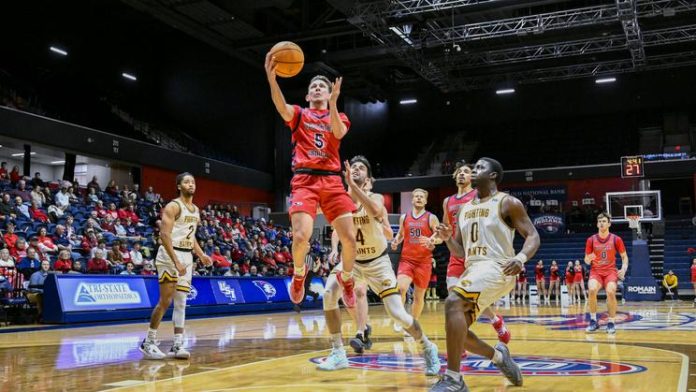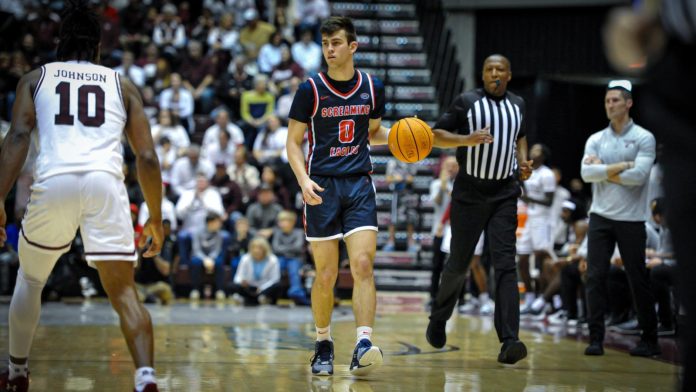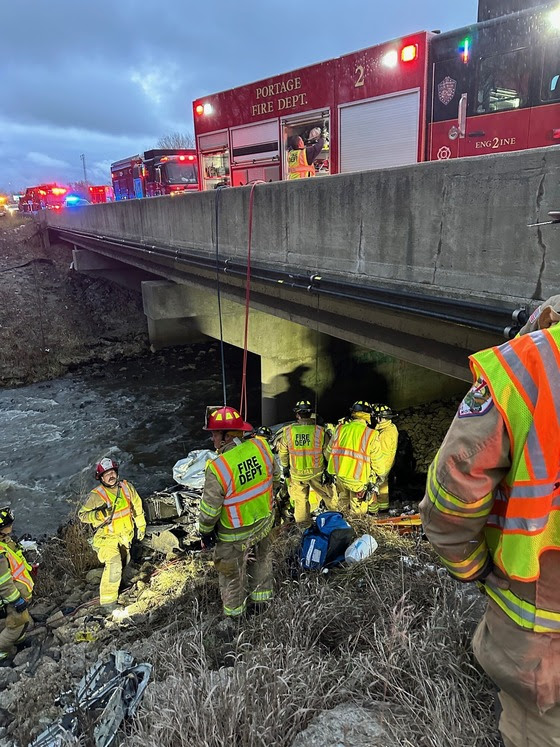Evansville, In.:  Having now won 5 of their last 6 games and earning at least a point in all 6 games, the Thunderbolts continue to move up in the SPHL standings as they prepare to close out 2023 on New Year’s Eve when they host the Macon Mayhem at Ford Center.
Week In Review:Â Â
In a wild back-and-forth game in Peoria, the Thunderbolts battled their way to a 5-4 shootout win on Friday behind two goals in regulation from Mike Ferraro, and one each from Bair Gendunov and Brendan Harrogate. Gendunov and Scott Kirton provided goals in the shootout, while Cole Ceci stopped 24 of 28 shots in regulation and overtime, plus 4 of 5 in the shootout. The Thunderbolts held a 3-1 lead late in Saturday’s rematch in Peoria with two goals from Tommy Stang and one from Gendunov, but the Rivermen came back to force overtime and win 4-3. On Tuesday night in Huntsville, the Thunderbolts flipped the script by coming back from a late 1-0 deficit with a goal from Grayson Valente to force overtime, where Kirton scored to win the game for Evansville 2-1.
The Week Ahead:Â
The Thunderbolts will be in Quad City this Friday and Saturday night to take on the Storm, both games at Vibrant Arena at The MARK beginning at 7:10pm CT. Fans can watch both games on FloHockey with a paid subscription or can listen in for free on the Thunderbolts Mixlr Channel. Fans can also watch both games at the Official Thunderbolts away game watch party at Parkway Pizza on 3911 Broadway Avenue on Evansville’s West Side. Sunday will be New Year’s Eve, and the Thunderbolts will host the Macon Mayhem at 7:00pm CT at Ford Center for the biggest New Year’s Eve event in the Tri-State, featuring a post-game jersey auction and a fireworks show inside Ford Center immediately after the auction. For tickets, call (812)422-BOLT (2548), go to EvansvilleThunderbolts.com, or visit the Ford Center Ticket Office
Coming Soon:Â Â
The Thunderbolts will host the Quad City Storm next Friday, January 5th and Saturday, January 6th, both games beginning at 7:00pm CT. Friday will be Thunderbolts Night, with more details and game elements coming soon. Saturday will be Gamer’s Night, featuring specialty jerseys worn by the Thunderbolts that will be auctioned off immediately after the game.
Scouting the Opponent:Â Â
-
- Record: 9-10-0, 18 Points, T-7th Place
- Leading Goal Scorer: Matt Ustaski (16 Goals)
- Leading Point Scorer: Matt Ustaski (28 Points)
- Primary Goaltender: Brent Moran (3-4-0, .902 Save %)
- Thunderbolts 23-24 Record vs QCS: 1-3
The Storm held several leads on Friday night in Huntsville, however the Havoc took control of the game in the third period to defeat Quad City 6-4. Logan Nelson, Cole Golka, Leif Mattson and Matt Ustaski each scored goals to give the Storm one-goal leads, before the Havoc scored three consecutive goals in the third period. Down 1-0 on Saturday in Knoxville, Quad City scored three-straight goals of their own, from Nelson, Golka, and Michael Moran, which proved to be enough in a 3-2 win over the Ice Bears. On Tuesday against Peoria, the Storm rallied late from a 5-2 deficit, but fell just short in a 5-4 loss. Golka scored twice while Ustaski and John Schiavo scored one goal each.
-
- Record: 4-12-4, 12 Points, 10th Place
- Leading Goal Scorer: Michael McChesney/Alex Laplante (7 Goals Each)
- Leading Point Scorer: Tommy Munichiello (17 Points)
- Primary Goaltender: Josh Boyko (2-9-4, .902 Save %)
- Thunderbolts 23-24 Record vs MAC: 1-0-1
The struggling Mayhem suffered another pair of losses this past weekend at the hands of the Pensacola Ice Flyers, beginning with a 6-1 defeat at home on Friday, with Justin Cmunt providing the lone goal. The Mayhem faired slightly better on Saturday in Pensacola, potting three goals from Tommy Munichiello, Jamie Dorsey and Michael McChesney, but fell short in a 7-3 loss. The Mayhem will play in Peoria this Friday and Saturday before traveling to Evansville for Sunday’s game.
Call-up ReportÂ
– Colton Kalezic (Cincinnati Cyclones)
– 10 GP, 1 G, 1 A, 2 P, 0 PIM
– Mike Ferraro (Savannah Ghost Pirates)
– 0 GP, 0 G, 0 A, 0 P, 0 PIM
– Cole Ceci (Atlanta Gladiators)
– 0 GP, 0-0-0, .000 Save %, 0.00 GAA
Transactions:Â Â Â Â
Wed. 12/27: G Cole Ceci called up to ECHL Atlanta
Tue. 12/26: F Mike Ferraro called up to ECHL Savannah
Tue. 12/26: F Vadim Vasjonkin claimed off waivers from Peoria
Tue. 12/19: D Michael Greco placed on 14-Day Injured Reserve
Tue. 12/19: F Bruno Kreisz claimed off waivers from Roanoke










